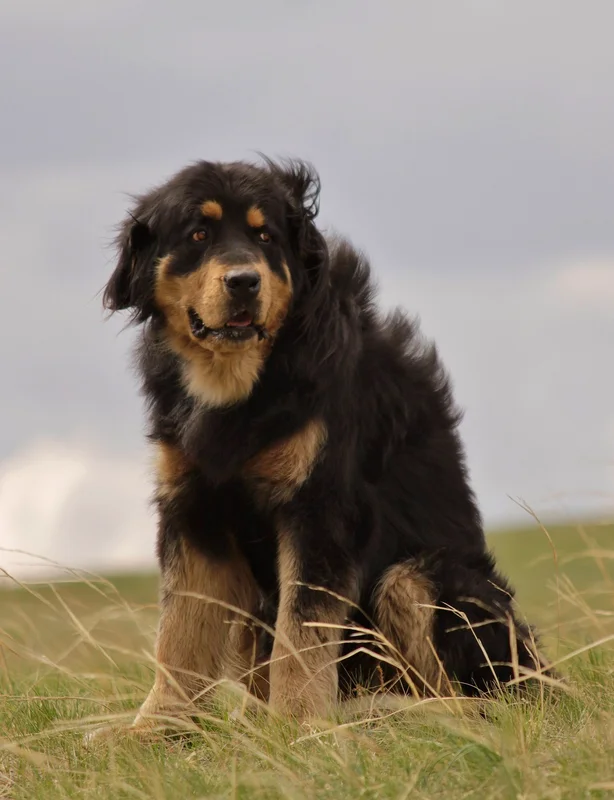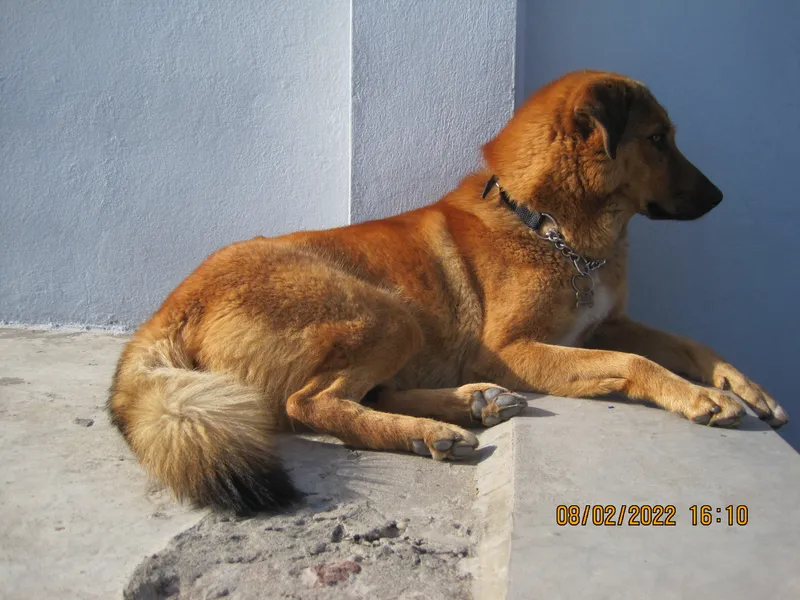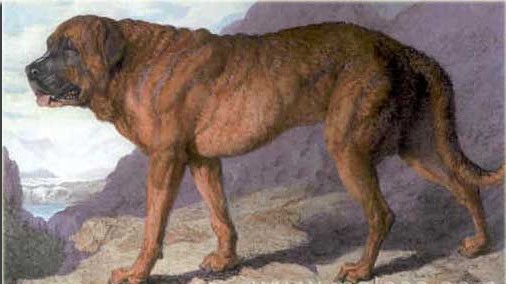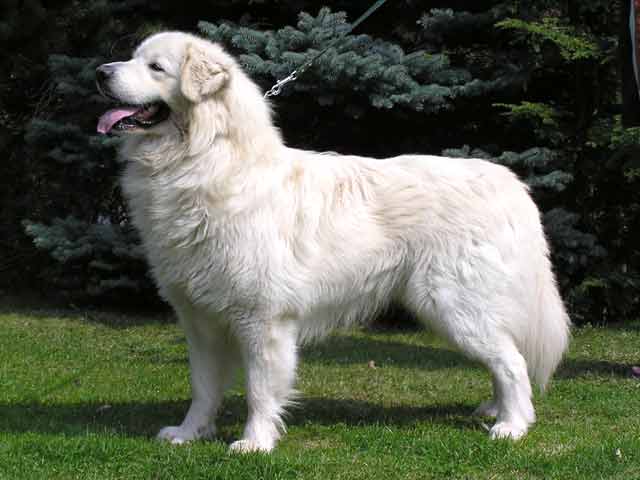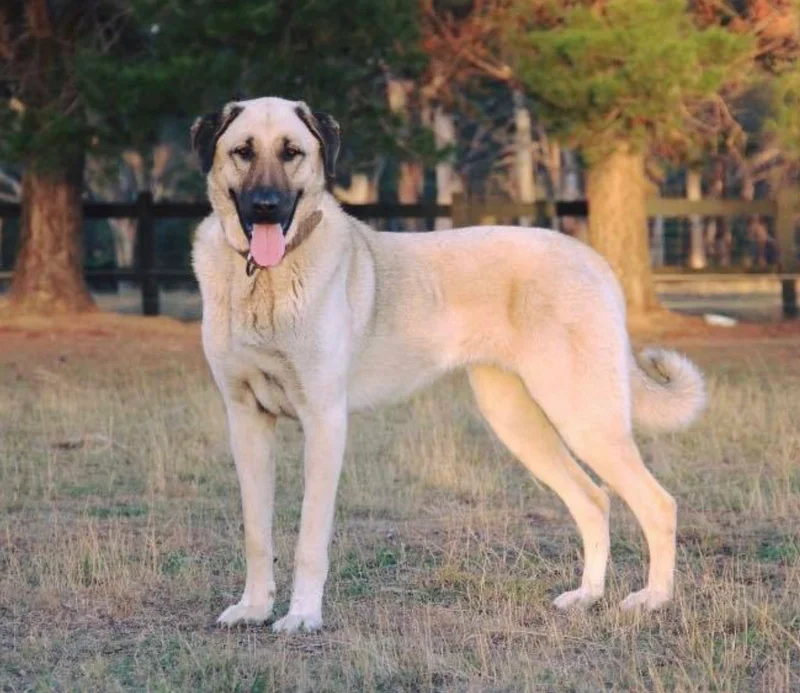Hovawart
The Hovawart is a medium to large German breed known for its loyalty and protective instincts. Originally bred as an estate guard dog, they are devoted family companions that require consistent training and exercise.
Overview
🐕Breed Overview
✨Key Traits
💡What Makes Hovawart Special
The Hovawart's key traits include its loyalty, intelligence, and protective nature. They are known for their ability to think independently, which can be both a strength and a challenge in training.
Their guarding instincts are deeply ingrained, making them naturally protective of their families and property. Hovawarts are also versatile working dogs, excelling in various roles such as search and rescue, tracking, and obedience.
Their affectionate demeanor towards family members, combined with their reserved nature around strangers, makes them well-suited for family life while still being alert and watchful.
The Hovawart is a distinguished medium to large German breed known for its exceptional guarding abilities and loyal companionship. ' Hovawarts are characterized by their robust build, standing between 23 to 29 inches tall and weighing between 66 to 110 pounds. Their coat can be black, black and gold, or blond, showcasing their striking appearance.
In terms of temperament, Hovawarts are devoted family dogs, forming strong bonds with their owners. They are somewhat reserved around strangers, making them excellent watchdogs. Their intelligence and independent nature require consistent training and mental stimulation.
Positive reinforcement is key, as Hovawarts may become reluctant if training relies solely on punishment. Historically, the Hovawart has played a significant role in German culture, with notable mentions in medieval law texts. Their bravery was exemplified in the tale of a Hovawart saving a nobleman's son during a siege, solidifying their reputation as loyal guardians.
Despite facing decline in the 20th century, dedicated breeders revived the breed, leading to its recognition by the German Kennel Club in 1937. Today, Hovawarts excel in various roles, including search and rescue, tracking, and as loving family companions. Owning a Hovawart requires commitment to training and exercise, as they thrive in active environments.
They are best suited for experienced dog owners who can provide the structure and engagement they need. With proper care and training, Hovawarts can be wonderful additions to any family, offering loyalty, protection, and companionship.
🎉Fun Facts
Hovawarts are excellent in search and rescue operations due to their keen sense of smell and tracking abilities.
The breed's name reflects its historical role as a guardian of estates, showcasing its protective nature.
The Hovawart is known for its remarkable guarding instincts, often requiring little training to fulfill this role.
They have a strong independent streak, which means they may not always follow commands immediately.
Breed Characteristics
Family & Friends
Good Behavior
Get Up & Go
Household Harmony
Temperament & Personality
✨Key Traits
🐕Core Temperament
The Hovawart's temperament is characterized by loyalty, intelligence, and a protective nature. They are devoted family dogs that thrive on companionship and interaction with their owners.
While they can be reserved around strangers, they are generally friendly and affectionate with family members. Their independent streak means they may not always be eager to please, requiring consistent training and positive reinforcement.
Hovawarts are known for their strong guarding instincts, which are inherent and do not require extensive training. Early socialization is crucial to ensure they are well-adjusted and comfortable in various situations.
💫Personality Profile
Hovawarts are known for their loyalty and protective instincts, making them excellent family companions. They are devoted to their families and often form strong bonds with their owners.
While they can be reserved around strangers, their natural guarding instincts make them vigilant watchdogs. Hovawarts are intelligent and independent, requiring consistent training and mental stimulation to thrive.
They enjoy being active and participating in various activities, including obedience training and dog sports. Their playful nature allows them to engage well with children, but early socialization is essential to ensure they are comfortable around other pets and strangers.
🔊Vocal Tendencies
Hovawarts are generally moderate barkers. They may bark to alert their owners of strangers or unusual sounds but are not known to be excessively vocal.
Their barking tends to be purposeful, often serving as a warning rather than for attention-seeking. While they may express excitement during play or when greeting family members, they are not prone to constant barking.
Early training can help manage their vocalizations, ensuring they understand when barking is appropriate.
Affection & Social Traits
Energy & Activity
Communication Style
Care Requirements
🏃♂️Exercise Requirements
Daily Exercise
The Hovawart is a medium to large breed with a high energy level, requiring regular and meaningful exercise to maintain their physical and mental well-being. Ideally, they should engage in at least 60 to 90 minutes of exercise daily, which can be broken down into multiple sessions.
Activities such as brisk walks, running, playing fetch, and participating in dog sports like agility or obedience training are excellent for this breed. Puppies should have shorter, more frequent play sessions to avoid overexertion, while senior dogs may require gentler activities to accommodate their physical limitations.
Regular exercise helps prevent obesity, supports cardiovascular health, and reduces behavioral issues stemming from boredom or excess energy. Insufficient exercise can lead to weight gain, destructive behaviors, and increased anxiety or restlessness.
Preferred Activities
🏠Living & Adaptability
Space Requirements
Hovawarts thrive in environments where they have ample space to move and explore. While they can adapt to apartment living if provided with sufficient daily exercise, they are best suited for homes with large yards or rural settings where they can roam freely.
Owners in smaller spaces should ensure regular outings to parks or open areas to meet the dog's exercise needs. The breed's size and energy level necessitate a space that allows for physical activity and mental stimulation.
Lack of space can lead to frustration and behavioral issues, so it's essential to create a stimulating environment with toys and activities to keep them engaged.
Climate Preference
🍲Feeding Guide
Schedule
Food Types
Portion Size
Special Nutritional Needs
Hovawarts may benefit from a diet rich in protein and healthy fats to support their active lifestyle. It's essential to monitor their weight and adjust portions accordingly to prevent obesity.
Some Hovawarts may have food sensitivities, so it's advisable to choose high-quality, grain-free options if allergies are suspected. Regular veterinary check-ups can help assess dietary needs and ensure optimal health.
✨Grooming Requirements
Grooming Overview
The Hovawart has a double coat that requires regular grooming to keep it healthy and free from mats. Their coat sheds moderately, with heavier shedding occurring seasonally.
Regular brushing, at least once a week, is recommended to remove loose hair and prevent tangles. During shedding seasons, more frequent brushing may be necessary.
Bathing should be done as needed, typically every few months or when they become particularly dirty. Nail trimming, ear cleaning, and dental care should also be part of their grooming routine to maintain overall health.
Care Schedule
Brush weekly; bathe as needed (every 1-3 months); trim nails every 2-4 weeks.
Health Profile
⚕️Health Care
Regular health care is essential for the Hovawart's longevity. Routine veterinary check-ups, vaccinations, and preventive treatments can help detect health issues early.
Maintaining a healthy weight through diet and exercise is crucial, as obesity can lead to various health problems. Owners should also be vigilant about dental care, as dental disease can significantly impact overall health.
By prioritizing health care throughout their life stages, owners can help ensure their Hovawart lives a long and healthy life.
Health Issues Overview
⏳Average Lifespan
Genetic Factors
Genetics play a significant role in the Hovawart's lifespan, with hereditary health issues such as hip and elbow dysplasia being common concerns. Responsible breeding practices that prioritize genetic diversity can help reduce the prevalence of these conditions.
Potential owners should seek reputable breeders who conduct health testing on their breeding stock to ensure the best chance of a healthy puppy. Understanding the genetic background of a Hovawart can help owners anticipate potential health issues and take proactive measures to manage them.
Living Conditions
The Hovawart's lifespan can be influenced by various environmental factors, including housing conditions, climate, and social interactions. They thrive in active households where they receive regular exercise and mental stimulation.
A balanced diet and routine veterinary care are crucial for their longevity. Exposure to different environments and socialization with other animals and people can enhance their overall well-being.
Providing a safe and engaging living space can significantly impact their happiness and health, contributing to a longer lifespan.
🏥Common Health Issues
Hip Dysplasia
Warning Signs
🔬Diagnosis
X-rays and physical examination by a veterinarian.
💊Treatment
Medications, weight management, and in severe cases, surgery.
📝Management Tips
Maintain a healthy weight, provide joint supplements, and avoid excessive exercise during growth stages.
Elbow Dysplasia
Warning Signs
🔬Diagnosis
X-rays and veterinary assessment.
💊Treatment
Pain management and surgical options if severe.
📝Management Tips
Regular exercise and weight management can help mitigate symptoms.
Bloat (Gastric Dilatation Volvulus)
Warning Signs
🔬Diagnosis
Physical examination and X-rays.
💊Treatment
Emergency surgery may be required.
📝Management Tips
Feed smaller, more frequent meals and avoid vigorous exercise after eating.
🛡️Preventive Care
🔬Hip Evaluation
Hip Evaluation assesses the hip joints for dysplasia and other abnormalities, crucial for preventing joint issues in the breed.
📅 Annually after 1 year of age.
🔬Elbow Evaluation
Elbow Evaluation checks for elbow dysplasia and other conditions that may affect mobility and comfort.
📅 Annually after 1 year of age.
🔬Thyroid Testing
Thyroid Testing screens for hypothyroidism, a common condition in many breeds, including the Hovawart.
📅 Every 1-2 years after 2 years of age.
Training
🧠Intelligence & Trainability
💪Work Drive
Hovawarts possess a strong work drive and thrive when given tasks to complete. Their history as working dogs means they require mental stimulation in addition to physical exercise.
Activities such as tracking, search and rescue, and obedience training can fulfill their need for purpose. Engaging them in dog sports or providing puzzle toys can also help keep their minds sharp.
Without sufficient mental engagement, Hovawarts may become bored and exhibit undesirable behaviors, such as chewing or excessive barking.
⚠️Training Considerations
Hovawarts can exhibit behavioral challenges such as stubbornness and independence, which may complicate training. Their strong guarding instincts can lead to wariness around strangers, necessitating early socialization to prevent overprotectiveness.
Additionally, they may become reluctant if training relies heavily on punishment rather than positive reinforcement. To overcome these challenges, owners should focus on building a strong bond through consistent, positive training methods.
Engaging activities that stimulate their minds and bodies can also help mitigate behavioral issues. For example, incorporating obedience training with fun games can keep them motivated and responsive.
📝Training Tips
Training a Hovawart requires patience, consistency, and positive reinforcement. Start with basic commands and gradually introduce more complex tasks as they master the fundamentals.
Socialization is crucial; expose them to various environments, people, and other animals from a young age to foster confidence and reduce wariness. Use treats, praise, and play as rewards to encourage desired behaviors.
Training sessions should be kept short and engaging to maintain their interest. Consider enrolling in obedience classes or working with a professional trainer experienced with working breeds to ensure effective training strategies are employed.
History & Heritage
📜Origin Story
The Hovawart originated in the Black Forest region of Germany, where it was bred by the aristocracy to guard estates. ' One of the earliest documented accounts of the Hovawart dates back to 1210, when a Hovawart saved the life of a nobleman's son during a siege.
This act of bravery solidified the breed's reputation as a loyal guardian. Over the centuries, the Hovawart was recognized for its versatility in tracking and guarding, but its popularity waned in the 20th century.
A dedicated group of breeders worked to revive the breed, leading to its official recognition and resurgence in popularity.
⏳Development History
The Hovawart's development dates back to medieval Germany, particularly in the Black Forest region. The breed was first documented in the 13th century, with references to its role as a guardian.
By the 15th century, it was recognized as one of the noble breeds, valued for its tracking abilities. However, the breed faced decline in the 20th century due to the rise of other working breeds like the German Shepherd.
In the early 1900s, enthusiasts, led by zoologist Kurt Friedrich König, initiated a breeding program to revive the Hovawart, incorporating various breeds to enhance its characteristics. The breed was officially recognized by the German Kennel Club in 1937, and despite setbacks during World War II, efforts to preserve the Hovawart continued, leading to its growing popularity in recent years.
🛡️Purpose & Historical Role
Originally bred as an estate guard dog, the Hovawart served as a protector of property and livestock. Its roles expanded to include tracking and search and rescue due to its keen senses and intelligence.
The breed was highly regarded in medieval German law, where it was mentioned as a valuable asset that required restitution if harmed. The Hovawart's historical significance is evident in its contributions to estate security and its esteemed status among noble breeds.
🏺Cultural Significance
The Hovawart has a rich historical significance in Germany, particularly as a guardian of estates and properties. Its name translates to 'estate guard dog,' reflecting its original purpose.
The breed is mentioned in medieval texts, highlighting its role in protecting families and property. The Hovawart's bravery was notably illustrated in the story of Eike von Repkow, who was saved by a Hovawart during a siege in the 13th century.
This act of heroism not only saved a life but also contributed to the breed's esteemed reputation in German law and culture. The Hovawart's legacy continues today, as it is recognized for its loyalty and protective instincts, making it a beloved companion and working dog.
Conservation Status
This breed is less common but has stable populations in certain regions.


